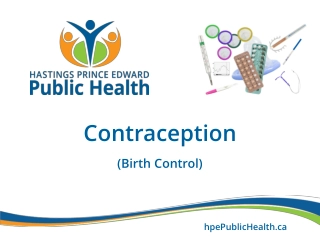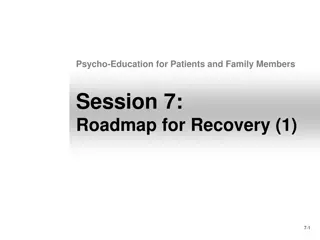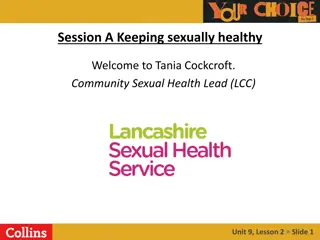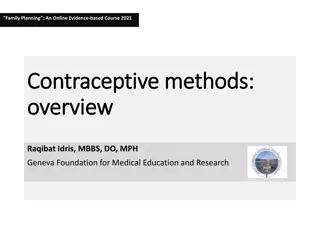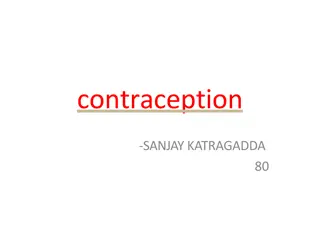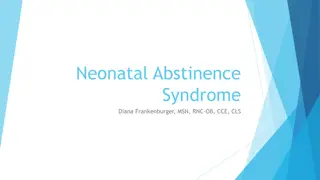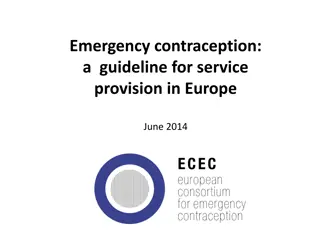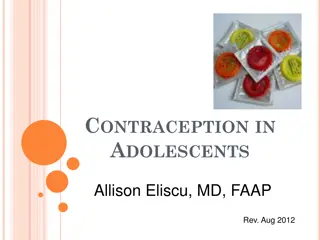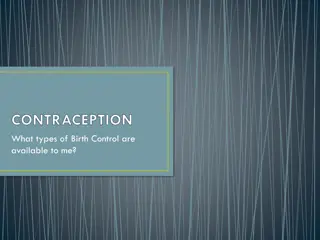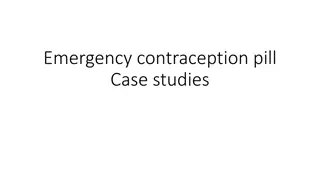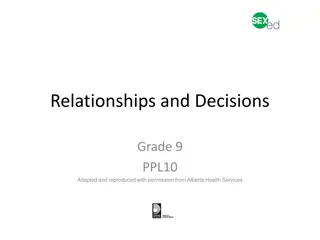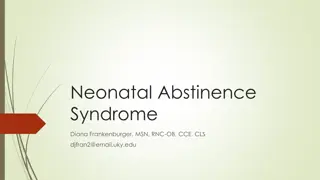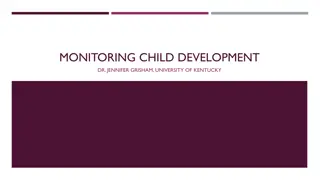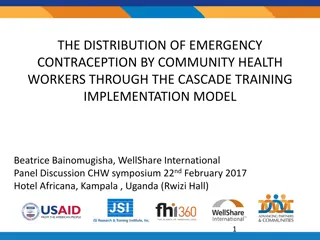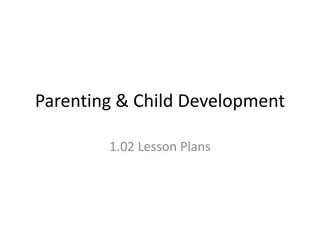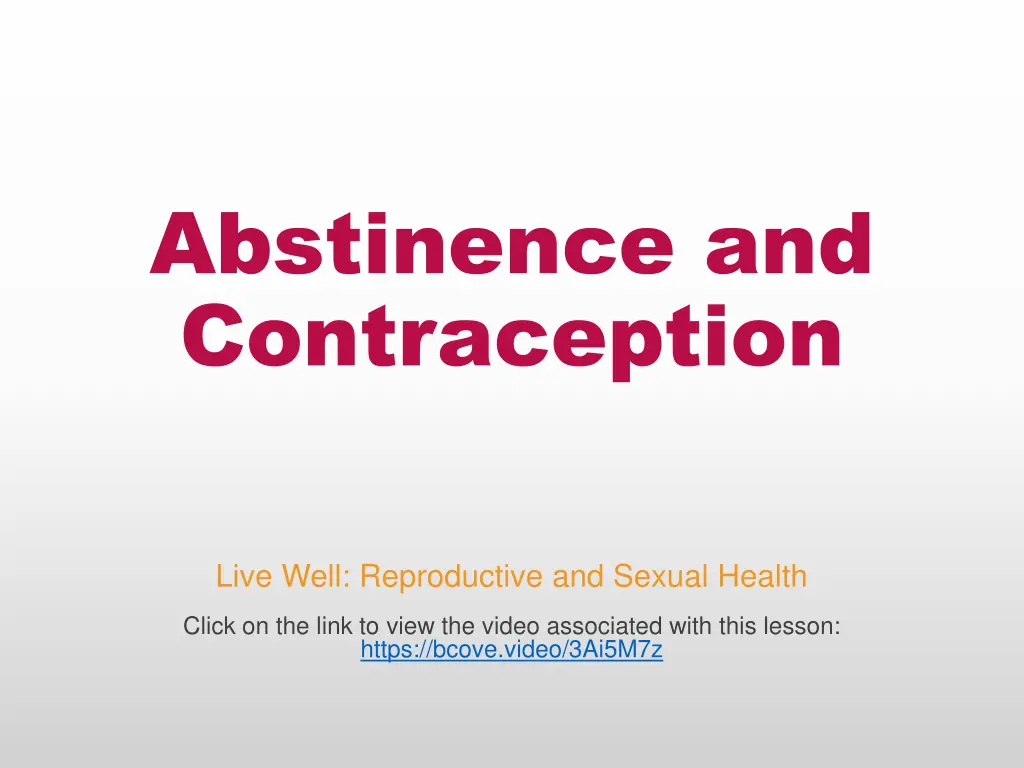
Understanding Contraception: Types, Benefits, and Challenges
Explore the world of contraception and abstinence for reproductive and sexual health. Learn about different types of contraceptives, the advantages and disadvantages of choosing abstinence or contraception, the role of safer sex in contraception, and the categories of contraceptives with examples. Dive into why someone would or would not use emergency contraception.
Uploaded on | 1 Views
Download Presentation

Please find below an Image/Link to download the presentation.
The content on the website is provided AS IS for your information and personal use only. It may not be sold, licensed, or shared on other websites without obtaining consent from the author. If you encounter any issues during the download, it is possible that the publisher has removed the file from their server.
You are allowed to download the files provided on this website for personal or commercial use, subject to the condition that they are used lawfully. All files are the property of their respective owners.
The content on the website is provided AS IS for your information and personal use only. It may not be sold, licensed, or shared on other websites without obtaining consent from the author.
E N D
Presentation Transcript
Abstinence and Contraception Live Well: Reproductive and Sexual Health Click on the link to view the video associated with this lesson: https://bcove.video/3Ai5M7z
Write About It List as many types of contraceptives as you can.
Can You . . . assess the advantages and disadvantages of choosing abstinence or a contraceptive? describe how safer sex is a component of contraception? differentiate between the four categories of contraceptives and provide at least two examples from each category? explain why someone would or would not use an emergency contraceptive?
Abstinence Abstinence means refraining from any type of sexual activity: vaginal; oral; anal; and naked genital-to-genital rubbing, or outercourse. Abstinence is 100% effective in protecting against pregnancy and sexually transmitted diseases (STDs).
Advantages of Choosing Abstinence No medical side effects No cost Can be used at any time It is 100% effective in protecting against pregnancy, human immunodeficiency virus (HIV), and sexually transmitted diseases (STDs)
Challenges to Being Abstinent It is sometimes hard to abstain from having sex. There may be pressure from your partner or friends to have sex.
Contraception Contraception is any method, medicine, or device used to prevent pregnancy. Using contraception is safer sex compared to no contraception. Safer sex is sex with an external latex condom; an internal condom; dental dams; gloves; or a finger sleeve.
The Primary Categories of Contraceptives (1 of 4) Barrier contraceptives prevent sperm from entering the uterus and, depending on the barrier contraceptive, may also prevent STDs from being spread. These include the external condom, internal condom, dental dam, finger sleeve, diaphragm, cervical cap, sponge, and spermicide. (continued)
The Primary Categories of Contraceptives (2 of 4) Hormonal contraceptives contain progestin, with or without estrogen, which work to prevent ovulation. These include the birth control pill, birth control patch, medroxyprogesterone acetate (Depo- Provera) shot, intrauterine device (IUD), vaginal contraceptive ring, and the implant. (continued)
The Primary Categories of Contraceptives (3 of 4) Natural contraceptives are not actual contraceptives but are methods to protect against pregnancy and STDs. They include abstinence, which protects against pregnancy and STDs, withdrawal, and fertility awareness method (FAM). (continued)
The Primary Categories of Contraceptives (4 of 4) When someone does not want to have children, they choose a permanent contraceptive. These are either tubal ligation for people with ovaries or a vasectomy for people with testicles.
Emergency Contraception A medical approach to preventing pregnancy after having unprotected sex. It does not prevent the spread of STDs. Used in emergency circumstances such as after unprotected vaginal sex, possible failure or incorrect use of contraceptive, or rape.
Skill-Building Challenge The only way to completely prevent STDs and pregnancy is to be abstinent. As you become involved in a relationship, you might become sexually active. There are multiple contraceptives available. Some have varying success rates in preventing STDs and pregnancy, and some only prevent pregnancy. Using decision-making skill cues, decide whether using contraceptives or abstinence is better for you. If you decide to use contraceptives, choose which one would be best for you and explain why, including the contraceptive s safety and efficacy in preventing STDs and unintended pregnancy. If you decide to be abstinent, explain why, including how to safely and effectively stay abstinent.

